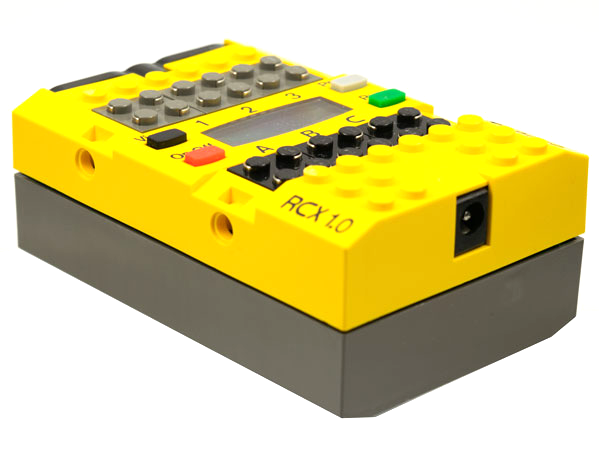The History of the Lego RCX: A Revolutionary Programmable Brick

The Lego RCX (Robotics Command eXplorer) is a programmable brick that was the first official unit of the Lego Mindstorms product line, which introduced kids to the world of robotics using Lego elements, motors, and sensors. The RCX was released in 1998 with the flagship set #9719 Lego Mindstorms Robotic Invention System 1.0¹. The RCX contains a 8-bit Renesas H8/300 microcontroller as its CPU, 32 KB of RAM, and 32 KB of ROM. It can be programmed by uploading a program from a Windows or Mac computer to the brick's RAM via a special infrared (IR) interface¹.
The development of the RCX began in the MIT Media Lab in the 1980s, where researchers created a prototype of a programmable brick that did not require connecting to a computer to operate a robot². The prototype was molded in gray plastic and programmed in Brick Logo, a dialect of the Logo programming language². The first visual programming environment for the prototype was called LEGOsheets, developed by the University of Colorado in 1994¹.
The Lego company partnered with MIT to commercialize the programmable brick concept and create the Mindstorms product line, named after the book Mindstorms: Children, Computers, and Powerful Ideas by Seymour Papert¹. The RCX was designed to be compatible with Lego Technic parts and to support various sensors and motors. The RCX could be programmed using different languages, such as NQC (Not Quite C), ROBOLAB (based on LabVIEW), and LEGO Visual Programming Language (VPL)¹.
The RCX was a revolutionary product that enabled kids to build their own robots and learn about programming, engineering, and problem-solving. The RCX was also popular among adult fans of Lego (AFOLs), who used it to create complex and innovative models, such as Rubik's Cube solvers, chess-playing robots, and musical instruments³. The RCX also inspired many third-party products and projects, such as alternative firmware, programming languages, sensors, and books³.
The RCX was succeeded by the NXT in 2006, which had a more powerful processor, more memory, a USB interface, Bluetooth connectivity, and a graphical display³. The NXT also introduced new sensors, such as sound, ultrasonic, and color³. The NXT was followed by the EV3 in 2013, which had an ARM9 processor, Linux operating system, micro SD card slot, and Wi-Fi capability³. The EV3 also added new motors and sensors, such as gyro and infrared³.The Lego RCX is a remarkable product that started a new era of Lego robotics. It has influenced generations of young and old builders who have explored the possibilities of creating their own robots using Lego. The RCX is a testament to the vision and innovation of Lego and MIT.
(1) Mindstorms RCX | Brickipedia | Fandom. https://brickipedia.fandom.com/wiki/Mindstorms_RCX.
(2) Going for Gold: The Story of the Golden LEGO RCX and NXT - BrickNerd. https://bricknerd.com/home/going-for-gold-the-story-of-the-golden-lego-rcx-and-nxt-9-9-21.
(3) A History of LEGO Education, Part 3: Mindstorms over matter [Feature]. https://www.brothers-brick.com/2020/02/03/a-history-of-lego-education-part-3-mindstorms-over-matter-feature/.
